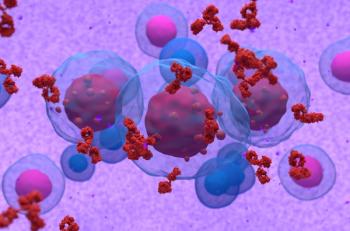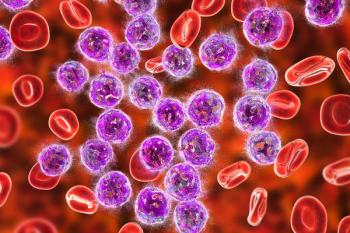
Study: Researchers Detect Protein Behind the Spread of Shingles Virus
Immediate-early 62 enclosed inside small extracellular vesicles can transport from the site of infection, causing it to penetrate cells and shut down their antiviral response.
New study findings from researchers at the University of Colorado Anschutz Medical Campus have announced a new evasion approach used by the varicella zoster virus (VZN)—the cause of chickenpox and shingles, that may allow it to impact tissues far from the original site of infection.1
“This is the first time a clear mechanism has been found that actually ties this virus to an avenue by which it can affect distal organs, far from the site of infection,” Christy Niemeyer, PhD, study author and assistant professor of neurology at the University of Colorado School of Medicine, said in a news release. “These vesicles shut down the immune response.”1
Published in the Journal of Virology, VZN reactivates from ganglionic sensory neurons which then produces herpes zoster—commonly known shingles and resides in about 95% of individuals. When first infected, the virus presents as the chickenpox and can reactivate into shingles later in life due to stress, aging, or additional factors. The painful skin disease can attack the nervous system, leading to vascular disease, stroke, and dementia. According to the release, reactivation can also increase susceptibility to co-infections with multiple viral and bacterial pathogens at sites distant from the original infection.1,2
The researchers aimed to identify the mechanism that allows VZN to spread far from the infection site because it has remained unclear. Using human neurons and rodent models, the researchers assessed a single viral protein called immediate-early 62 (IE62) that is carried throughout the body in structures known as the small extracellular vesicles (sEVs). According to the release, the sEVs are membranous signaling structures that deliver proteins and nucleic acids to adjust the function of distal cells and tissues during regular physiological conditions. Along with IE62, the researchers also detected multiple immunosuppressive and vascular disease-associated host proteins and miRNAs that were nonexistent in sEVs from uninfected neurons.1.2
The results displayed that IE62 enclosed inside sEVs can transport from the site of infection, causing it to penetrate cells and shut down their antiviral response, allowing infection by the virus, according to study authors.1
“We believe this protein is likely being packaged into sEVs and shuttled down the neurons that go to your skin, making the cells under the skin vulnerable to the whole infection,” Andrew Bubak, PhD, assistant professor of neurology at the CU School of Medicine, said in a news release. “We think this precedes the rash, which is obviously interesting from a therapeutic standpoint.”1
Bubak also noted that this mechanism can also account for other co-infections and immunosuppressive events that are displayed among individuals infected with VZV, furthering research on other viruses’ infection.1
The study authors noted that despite shingles vaccines being available, there are no drugs that can influence the activity of the protein—emphasizing the need for further research.1
“This study is the first to identify a different anti-viral target that perhaps we can develop therapeutics for,” Niemeyer said in a news release, “We need to better understand their role in viral spread and secondary disease development to reduce the systemic complications caused by VZV infections.”1
REFERENCES
1. CU Anschutz scientists identify key protein behind spread of shingles virus. EurekAlert!. News release. July 25, 2024. Accessed September 12, 2024. https://www.eurekalert.org/news-releases/1052611
2. Suppression of the host antiviral response by non-infectious varicella zoster virus extracellular vesicles. Journal of Virology. News release. July 25, 2024. Accessed September 12, 2024. https://journals.asm.org/doi/10.1128/jvi.00848-24
Newsletter
Stay informed on drug updates, treatment guidelines, and pharmacy practice trends—subscribe to Pharmacy Times for weekly clinical insights.

















































































































































































































